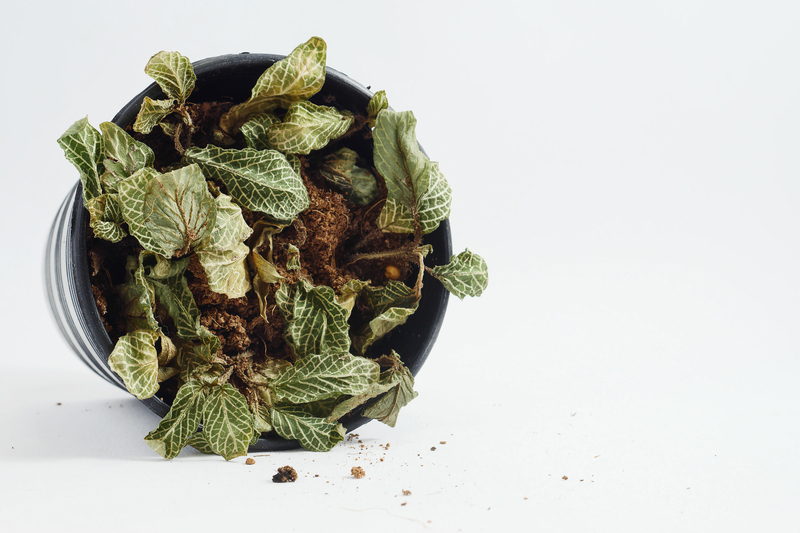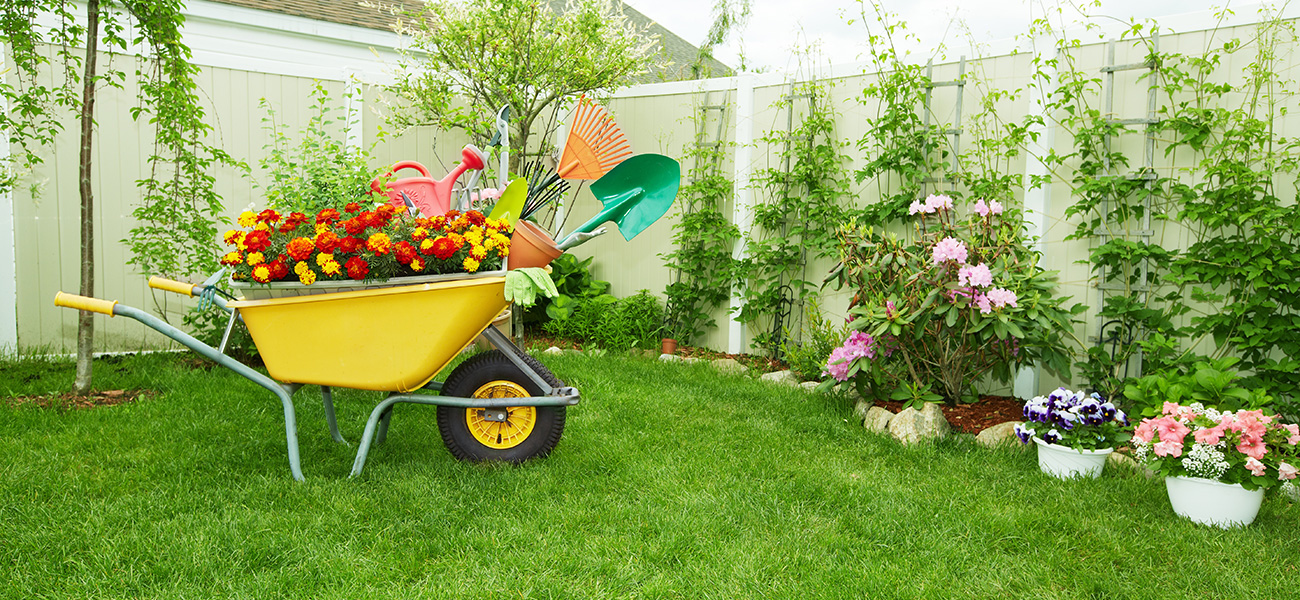Transforming Organic Waste into Fertile Ground
Posted on 21/08/2025
Transforming Organic Waste into Fertile Ground: A Comprehensive Guide
Every year, global households and enterprises generate billions of tons of organic waste. More than just kitchen scraps and garden trimmings, this abundance of organic material is typically treated as trash, filling up our landfills and contributing to harmful methane emissions. However, an exciting revolution is taking place -- transforming organic waste into fertile ground is changing how we manage waste, grow food, and restore the planet's ecosystems.
What is Organic Waste?
When we use the phrase organic waste, we refer to any waste material from plant or animal sources that is biodegradable. Some of the most common examples of organic waste include:
- Food scraps like fruit peels, vegetable cuttings, coffee grounds, and leftover meals
- Yard waste, such as grass clippings, leaves, small branches, and plant trimmings
- Paper products made from plants, including napkins, cardboard, and eggshell cartons
- Animal manure and bedding from livestock
- Biodegradable packaging marked as compostable
Organic waste is a valuable resource. Instead of seeing it as rubbish, modern approaches focus on how to convert organic waste into nutrient-rich soil that replenishes the ground and nurtures future generations of crops.

The Benefits of Diverting Organic Waste from Landfills
When organic matter sits in landfill environments devoid of oxygen, it produces methane -- a greenhouse gas dozens of times more potent than carbon dioxide. By transforming organic material into fertile soil instead, we unlock a cascade of global and local benefits:
- Reduced greenhouse gas emissions
- Enriched soil health increases crop yield and resilience
- Improved soil structure for water retention and drought resistance
- Reduced dependence on chemical fertilizers and pesticides
- Waste management cost savings for communities
- Promotion of local food systems and closed-loop economies
*Cleverly harnessing the nutrient cycle through the conversion of organic waste into fertile ground is a fundamental tool in the fight against climate change and soil degradation.*
Methods to Convert Organic Waste into Fertile Ground
Multiple methods exist for turning waste into fertile soil. Here's a detailed look at the most effective and accessible approaches.
1. Backyard Composting
Backyard or small-scale composting is the most accessible solution for households. This method allows individuals, families, and community gardens to turn food waste into fertilizer simply and efficiently.
- Aerobic composting: Pile layers of green matter (food scraps, grass) and brown matter (leaves, shredded paper) in a bin or heap. Turn regularly to add oxygen and hasten decomposition.
- Vermicomposting: Use worms (generally Eisenia fetida, or red wigglers) to consume soft food scraps and produce worm castings -- an incredibly potent, organic soil amendment.
- Bokashi composting: Bokashi is a fermentation method using beneficial microbes to break down food quickly, including meat and dairy, which aren't suitable for regular compost.
2. Community Composting and Municipal Facilities
Many neighborhoods now offer community drop-off sites or curbside green bins. Collected organic waste is processed at a larger scale, using controlled piles or windrows that are turned and monitored for temperature and moisture.
- Windrow composting: Compostables are formed into long rows turned by heavy equipment.
- In-vessel composting: Waste is placed in large containers, allowing precise control of conditions for rapid, large-scale breakdown.
These methods transform organic waste into fertile ground that's often sold or given to farmers, landscapers, and gardeners as a rich amendment.
3. Anaerobic Digestion
Unlike aerobic composting, anaerobic digestion processes organic matter in the absence of oxygen, typically inside sealed tanks. This simultaneously converts organic waste into biogas (for energy) and a nutrient-rich sludge (digestate) that can be used as fertilizer.
- Great for handling high-moisture content organic waste like food processing and dairy waste
- Generates renewable energy in addition to soil amendment
- Well suited for farms, food industries, and municipal scale processing
4. Black Soldier Fly Larvae (BSFL) Composting
An emerging technology, BSFL composting employs larvae that rapidly consume food waste, transforming it into usable compost and high-protein animal feed. This method minimizes mass and offers lucrative co-products.
The Science Behind the Process: How Waste Becomes Fertile Soil
Decomposition and the Soil Food Web
At the core of converting organic waste into fertile ground lies the incredible biological system known as the soil food web. This web features:
- Bacteria and fungi that chemically break down waste
- Invertebrates -- like earthworms and beetles -- that physically fragment material
- Actinomycetes, protozoa, mites, and more, all interacting to process nutrients
Together, these organisms decompose organic matter, converting it into humus -- the stable, dark, crumbly component of healthy soil capable of retaining water and nutrients.
Nutrient Cycling and Soil Fertility
As compost matures, nutrients such as nitrogen, phosphorus, and potassium are made available in plant-accessible forms. This organic fertilizer boosts:
- Root development and overall plant vigor
- Resilience to pests and disease through improved soil microbiology
- Capacity for soils to sequester carbon and withstand erosion
Applying composted organic waste even helps remediate contaminated soils by binding toxins and fostering beneficial microbes.
How to Transform Organic Waste at Home: A Step-by-Step Guide
Want to start turning household waste into fertile soil? Here's a comprehensive plan for home composting success:
-
Choose Your Composting Method
Aerobic bin, tumble composter, worm bin, or bokashi? Select based on your available space, volume, and types of waste. -
Set Up Your System
Install your bin or pile in a shaded, well-drained spot. Add a layer of twigs or straw to enhance air flow. -
Add Waste Wisely
Alternate greens (nitrogen-rich: food scraps, coffee grounds, fresh grass) and browns (carbon-rich: dry leaves, paper, sawdust) as you go. -
Maintain the Pile
Keep the mixture just moist, like a wrung-out sponge. Turn your compost weekly to aerate and speed up decomposition. -
Harvest and Use
In 3-12 months, your pile will yield earthy-smelling, dark brown compost. Sift out undecomposed pieces and apply the finished product to garden beds, potted plants, or lawns.
Common Challenges in Composting and How to Overcome Them
- Odor or pests? Avoid adding meat, dairy, and oily foods. Keep a good green/brown balance and cover food scraps with dry matter.
- Pile too dry or slow to break down? Add more green (wet) materials and water. Turn more frequently to reintroduce oxygen.
- Too wet or slimy? Incorporate more brown (dry) material and turn in more air.
Industrial and Agricultural Applications: Scaling Up the Process
Farmers, municipalities, and companies are leading the way in large-scale organic waste recycling into soil enrichers. Here's how:
- Farm-scale composting: On-site transformation of manure, crop residuals, and food byproducts into fertilizer for fields.
- Municipal green waste management: City programs collect yard and food waste, process it, and distribute compost to residents or agricultural enterprises.
- Innovative startups: Companies leverage technology (like bioreactors and AI monitoring) to maximize conversion efficiency and product quality.
This shift from landfill-bound waste streams to circular economy models is not just sustainable -- it's profitable.
Innovative Trends in Organic Waste Recycling
The field of organic matter recycling is rapidly advancing. Some promising new trends include:
- Biochar: Pyrolyzing (burning without oxygen) organic waste creates a stable carbon-rich product for soil health and carbon sequestration.
- Precision composting: Smart sensors and big data optimize compost conditions, improving yields and reducing process times.
- Closed-loop agriculture: Farms and food processors partner to exchange waste and compost locally, creating hyper-regional food systems.

Global Impact: How Transforming Organic Waste is Healing the Planet
- Reduction in landfill use and thus immense methane mitigation
- Regeneration of degraded soils for reforestation and ecosystem restoration
- Creation of green jobs in waste management, composting, and sustainable agriculture
- Stimulation of local economies by producing and selling organic amendments
- Support for urban agriculture and food security initiatives
How to Get Started: Turn Your Waste into Fertile Ground Today!
Transforming organic waste into fertile ground is an empowering act, whether in your backyard or on a city-wide scale. Begin by assessing your waste stream, setting up a compost solution, and educating your household or workplace. Support or volunteer at community compost projects or lobby for progressive waste management policies in your area.
By closing the loop on organic matter, you'll nurture healthier soils, mitigate climate impacts, and contribute to a greener, more sustainable future.
Let your food and garden waste feed the Earth, not the landfill. Start transforming today -- and watch abundance grow beneath your feet!
Further Reading and Resources
Tags: organic waste conversion, composting, soil health, waste transformation, sustainable agriculture



